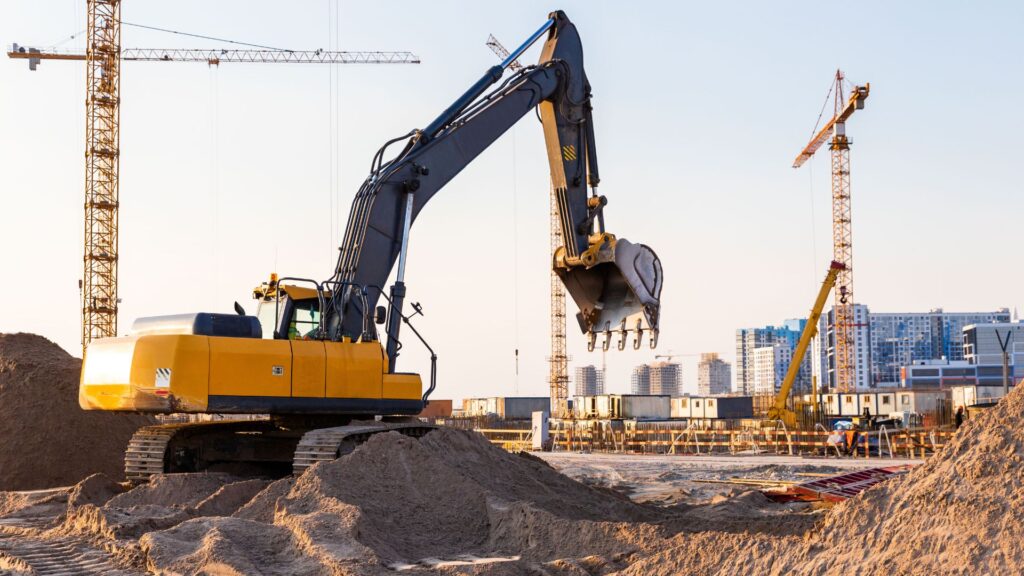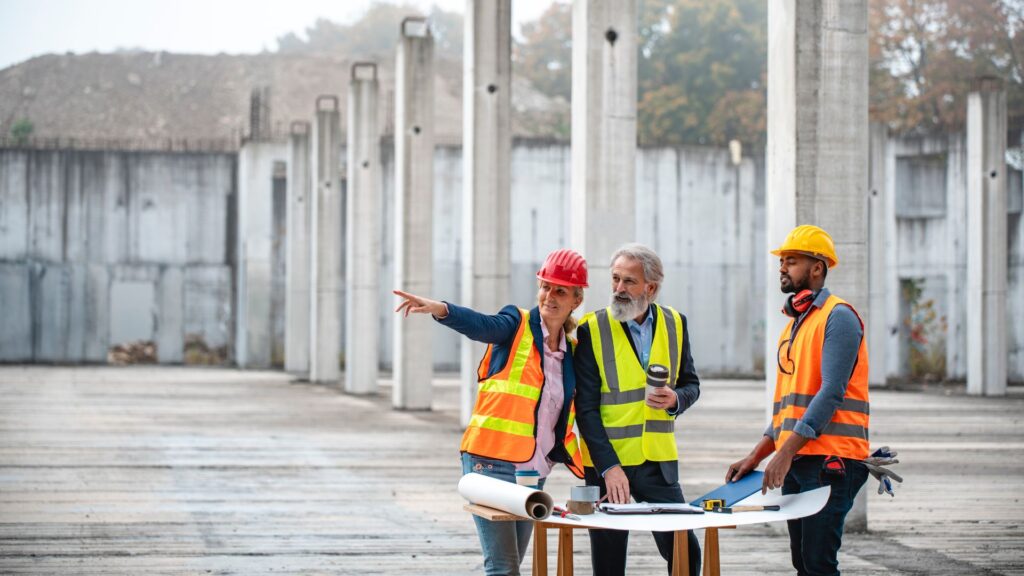When contractors or suppliers go unpaid on a construction project in Hawaii, they have the option to file a mechanics lien, also known as Hawaii liens, to protect their right to payment. This legal instrument grants the unpaid party a security interest in the property, offering a safeguard against nonpayment.
At CRM Lien Services, we specialize in ensuring that you get paid quickly and reliably. We can prepare and file mechanics liens for you in accordance with Hawaii law, taking into account Hawaii construction lien law and state-specific rules and regulations, including the need for an adequate and ascertainable description of the real estate.
This guide outlines the essential rules, steps, and deadlines involved in filing a valid mechanics lien Hawaii.

Key Takeaways
- Strict Filing Deadlines: Mechanics liens in Hawaii must be filed within 45 days of project completion. If a Notice of Completion is recorded, the 45-day countdown starts from that filing date. Without it, the project is considered complete one year after substantial completion, with the lien still needing to be filed within 45 days.
- Licensing Requirements Impact Lien Rights: Only licensed contractors and suppliers can file valid mechanics liens in Hawaii. If a contractor on the project is unlicensed, even licensed subcontractors further down the chain may lose their lien rights.
- Court Involvement is Required: Filing a mechanics lien in Hawaii involves legal proceedings, including a court hearing to determine probable cause for the lien to attach. Proper service of the lien documents on relevant parties is essential, and failure to enforce the lien within 3 months after the lien is attached will invalidate it.
Understanding Hawaii Mechanics Lien Law
Navigating Hawaii mechanics lien law can be complex, but understanding its fundamentals is crucial for anyone involved in the construction industry. A mechanics lien in Hawaii serves as a security interest against a property, ensuring that contractors, subcontractors, and suppliers get paid for their labor and materials. This lien is filed with the circuit court in the county where the property is located and must be served on the property owner and other interested parties.
To file a mechanics lien in Hawaii, claimants must adhere to specific requirements. This includes providing written notice to the property owner and other interested parties, filing the lien with the circuit court, and serving the lien on the relevant parties. Importantly, the lien must be filed within 45 days from the last date labor or materials were provided. Understanding these steps and adhering to Hawaii mechanics lien law can help protect your right to payment.
Who Is Eligible to File a Hawaii Mechanics Lien?
In Hawaii, mechanics lien rights are granted to individuals or groups who provide labor or materials toward enhancing real property. This generally includes general contractors, subcontractors, sub-subcontractors, material suppliers, laborers, as well as design professionals like architects and engineers. Compensation for labor and materials is based on the fair and reasonable value of the contributions, ensuring that all parties are fairly compensated for their work.
However, to qualify for lien rights, the work of architects or other design professionals must be integrated into the project’s construction or improvement efforts.
Can an Unlicensed Contractor Legally File a Hawaii Mechanics Lien?
In Hawaii, mechanics lien rights are only valid if the entity required to hold a license has obtained one. Additionally, if the primary contractor on the project is unlicensed, even properly licensed subcontractors or other parties further down the chain may lose their right to file a valid lien.
When is the Deadline to File a Hawaii Mechanics License?

In Hawaii, mechanics lien claims must be filed within 45 days from when the project’s improvements are deemed complete.
If a Notice of Completion is recorded, the 45-day deadline to file the lien starts on the filing date of the notice.
If no Notice of Completion is submitted, the project will be treated as completed one year after substantial completion, and the lien must be filed within 45 days from that point.
Can Attorney Fees, Collection Costs, or Other Charges Be Added to the Lien Amount?
No, Hawaii mechanics lien claims do not permit the inclusion of items like interest, attorney’s fees, lost profits, or expenses related to food, lodging, or transportation for workers brought in from other states.
Does a Hawaii Mechanics Lien Take Priority Over Existing Mortgages or Loans?
No, in Hawaii, mechanics liens become effective from the visible start of the improvement work. Typically, all mechanics liens share equal priority and take precedence over other liens, except for government liens, mortgages, and any liens recorded before the mechanics lien.
Who Cancels the Hawaii Mechanics Lien When I Get Paid?
Once the lien is satisfied, the lienee must file a written notice with the court clerk, and the mechanics lien record will be updated accordingly at the lienee’s expense.
Is It Necessary to Send a Hawaii Preliminary Notice?
No, Hawaii does not mandate prior notice before filing a mechanics lien. However, sending a Notice of Intent to Lien to the property owner is optional and can help initiate the payment process.
What Happens If the Hawaii Preliminary Notice Is Sent Late?
Hawaii does not require preliminary notices, meaning there is no deadline or risk of sending one late.
Property Sufficient for a Mechanics Lien
Not all properties qualify for a mechanics lien Hawaii. To be eligible, the property must be a type of real property, such as a building, structure, or land, and it must be located within the state. Additionally, the property must be the subject of a construction project.
It’s important to note that mechanics liens cannot be filed against government-owned properties in Hawaii. Only privately owned properties are subject to mechanics liens. Ensuring the property meets these criteria is essential before proceeding with the lien process.
Mechanics Lien vs. Other Remedies
While a mechanics lien is a powerful tool for securing payment, it is not the only remedy available to contractors, subcontractors, and suppliers in Hawaii. Other options include filing a lawsuit, seeking arbitration or mediation, or filing a claim with a surety bond.
A mechanics lien is often preferred because it provides a security interest in the property, which can be leveraged to secure payment. However, the lien must be filed and served correctly, and the claimant must meet specific eligibility requirements. In some cases, other remedies may be more appropriate, depending on the circumstances of the payment dispute.
5 Key Facts About Hawaii Mechanics Liens

Contractors and suppliers working on projects in Hawaii enjoy strong lien rights. If they aren’t paid for their work, filing a mechanics lien can be a powerful way to expedite payment and protect their financial interests. However, specific rules and procedures must be followed to ensure the lien is valid. Below is a breakdown of the essential aspects of Hawaii mechanics lien process.
Proper Documentation is Crucial: Filing a Hawaii mechanics lien form requires detailed information and adherence to specific legal requirements. Ensuring that all necessary details are included can prevent the lien from being invalidated.
1) Only Licensed Parties Can Claim Mechanics Lien Rights
In Hawaii, all parties involved in construction—such as general contractors, subcontractors, sub-subcontractors, suppliers, and laborers—have lien rights, provided they meet licensing requirements. Architects, engineers, and other design professionals also qualify for lien protection if their work is integrated into the project. However, unlicensed contractors lose their mechanics lien rights if a license is required by law. Additionally, even if a subcontractor or supplier meets the qualifications, their lien rights will be invalid if the general contractor on the project is unlicensed.
2) A Strict 45-day Deadline Applies to File a Mechanics Lien
All project participants must file their mechanics lien within 45 days of the last date they provided labor or materials. After filing, the claimant must serve a copy of the Application for a Lien and the Notice of Lien on the property owner and any other parties with an interest in the property. Typically, the necessary documents are submitted as part of a single legal filing, which is handled through the appropriate Hawaii circuit court by the claimant’s attorney.
3) No Preliminary Notice Is Required
Unlike many states, Hawaii does not require a preliminary notice to preserve mechanics lien rights. While this simplifies the process, sending a Notice of Intent to Lien can still be a useful strategy to encourage payment before filing a lien.
4) Filing a Mechanics Lien Requires Legal Proceedings
In Hawaii, filing a mechanics lien is more involved than in most states, requiring legal action in the manner prescribed by law, including a court hearing scheduled within 3 to 10 days of filing. During the hearing, a judge will determine if probable cause exists for the lien claim. Failure to adhere to deadlines will result in the loss of lien rights.
5) Hawaii Mechanics Liens Are Subject to Existing Encumbrances
Hawaii mechanics liens generally rank equally in priority but do not take precedence over pre-existing loans, mortgages, or other liens. The lien attaches from the time of the visible commencement of work, giving it priority over any subsequent encumbrances. However, government liens, mortgages, and any previously recorded liens will maintain priority over mechanics liens in Hawaii.
By following these guidelines, contractors and suppliers can better protect their rights and ensure timely payment for their work in Hawaii.
Common Mistakes to Avoid
Filing a mechanics lien in Hawaii involves several steps, and there are common mistakes that can jeopardize the validity of the lien. One frequent error is failing to provide written notice to the property owner and other interested parties. This notice is a legal requirement and must be given before the lien can be filed.
Another common mistake is missing the filing deadline. In Hawaii, the mechanics lien must be filed with the circuit court within 45 days from the last date labor or materials were provided. Failing to meet this deadline can result in the loss of lien rights. Ensuring compliance with these requirements is crucial for a successful lien claim.
Owner’s Rights and Responsibilities
Property owners in Hawaii have specific rights and responsibilities when it comes to mechanics liens. One of the key rights is the right to receive written notice of the lien before it is filed. This notice allows the owner to address any payment issues before the lien process begins.
Owners also have the right to contest the lien by filing a response with the circuit court. If the court finds the lien to be invalid, it may be discharged. On the responsibility side, property owners must ensure timely payment to contractors, subcontractors, and suppliers. Failure to do so can result in a mechanics lien being filed against the property.
To prevent a mechanics lien, property owners should pay promptly and require contractors and suppliers to provide written notice before filing a lien. Understanding these rights and responsibilities can help property owners manage and mitigate the risks associated with mechanics liens.
How to File a Mechanics Lien in Hawaii?
Getting paid promptly for construction work in Hawaii can be challenging. Delays or non-payment can create significant financial strain. Fortunately, Hawaii law provides a powerful legal tool—mechanics liens—to help contractors and suppliers secure payment. A mechanics lien gives the claimant a security interest in the improved property, incentivizing the property owner and other parties to pay what’s owed. However, filing a mechanics lien in Hawaii involves specific steps, legal requirements, and strict deadlines. The requested lien arises claims must be carefully documented and submitted to ensure compliance with Hawaii’s legal requirements.
This guide offers a detailed breakdown of the process to help construction professionals secure their payment.
Who Can File a Mechanics Lien in Hawaii?

General contractors, subcontractors, suppliers, laborers, architects, engineers, and other design professionals who contribute to a project are entitled to lien rights—provided their work is incorporated into the project. However, all parties must meet licensing requirements. If a required license is missing, the party loses its lien rights. Additionally, if the general contractor is unlicensed, even properly licensed subcontractors or suppliers further down the chain may not have lien rights.
Key Steps to File a Hawaii Mechanics Lien
Filing a valid lien in Hawaii requires specific documentation. Claimants must submit both an Application for a Lien and a Notice of Lien to the circuit court in the jurisdiction where the property is located.
These documents must include essential information, as required by Hawaii law under §507-43:
- Claim Amount
- Details of Labor or Materials Provided
- Sufficient Property Description
- General Contractor’s Name
- Names of All Relevant Parties (Owner, Assignor, Contracting Parties)
- Additional Information (e.g., mortgage holders or sureties, if available)
Both the Application and Notice of Lien must be served on the property owner, interested parties, and those involved in the project. Missing or incorrect information may render the lien invalid.
Initiating Legal Action
Since filing a mechanics lien in Hawaii requires legal proceedings, companies (e.g., LLCs or corporations) must generally engage an attorney for the filing. Individual claimants may represent themselves, though the process is complex.
Filing involves:
- Preparing the Application and Notice of Lien
- Submitting the Documents in Court (either in person or via courier)
- Ensuring Proper Formatting and Margin Compliance (as court rules may vary)
- Paying the $345 Filing Fee (subject to additional fees depending on the court)
Upon submission, claimants should retain a certified copy of the filing for their records.
Serving the Mechanics Lien
Hawaii law mandates personal service of both the Application and Notice of Lien on:
- The Property Owner
- Other Interested Parties
- The Party Who Ordered the Work (if different from the owner)
Failure to complete proper service will prevent the lien from attaching to the property, resulting in a loss of filing fees and lien rights.
Court Hearing and Lien Approval
Once the documents are served, a court hearing will be scheduled between 3 and 10 days after service. At this hearing, the judge determines whether probable cause exists for the lien to attach to the property.
All parties who received notice may provide evidence and testimony at the hearing. If the court finds probable cause, the lien will attach in the amount determined appropriate. If there are disputes, the court may only approve the lien for a reduced amount.
The lien will not officially attach until the court grants approval, following proper service and the hearing process.
Enforcement of a Hawaii Mechanics Lien
Once the lien attaches, the claimant must enforce it within 3 months. Failure to do so will result in the lien’s expiration, forfeiting the right to payment through the lien process.
Filing a mechanics lien in Hawaii is a multi-step process that involves legal proceedings, strict timelines, and proper service requirements. If done correctly, a lien can be a powerful tool to secure the payment owed. This guide empowers you to take the necessary steps to file a valid lien and ensure fair treatment. However, given the complexities of filing in Hawaii, consulting with an attorney is often advisable to navigate the process effectively.
Get in Touch
Filing a mechanics lien in Hawaii offers contractors and suppliers a valuable tool to secure payment for their work. This legal mechanism grants a security interest in the property, encouraging owners to resolve payment issues. However, to ensure the lien is valid, strict procedures, deadlines, and legal requirements must be followed.
By adhering to Hawaii’s mechanics lien laws, construction professionals can protect their financial interests and ensure timely compensation. While the process involves legal filings and hearings, it provides a powerful safeguard against nonpayment—helping participants receive what they rightfully earned.
